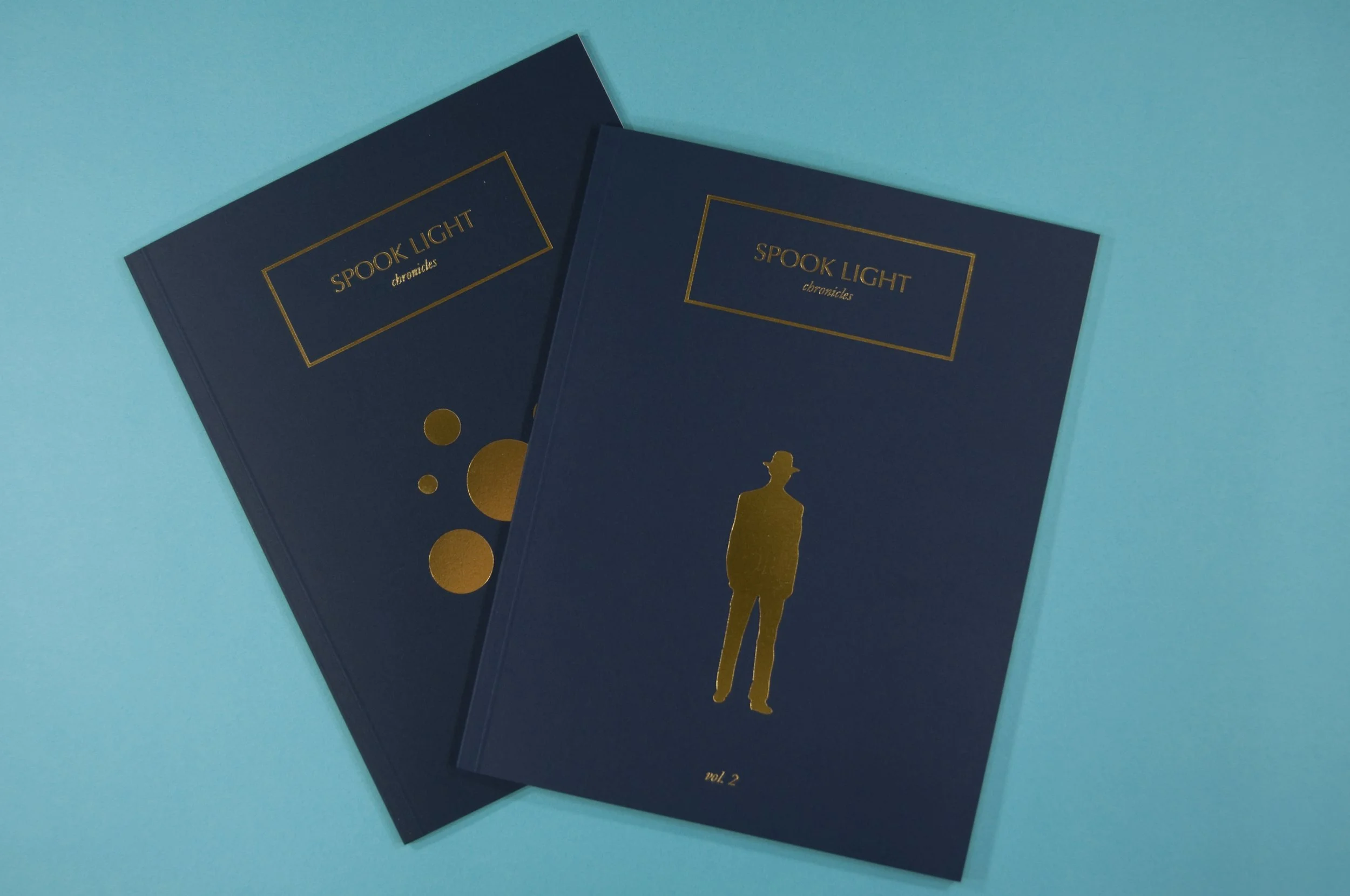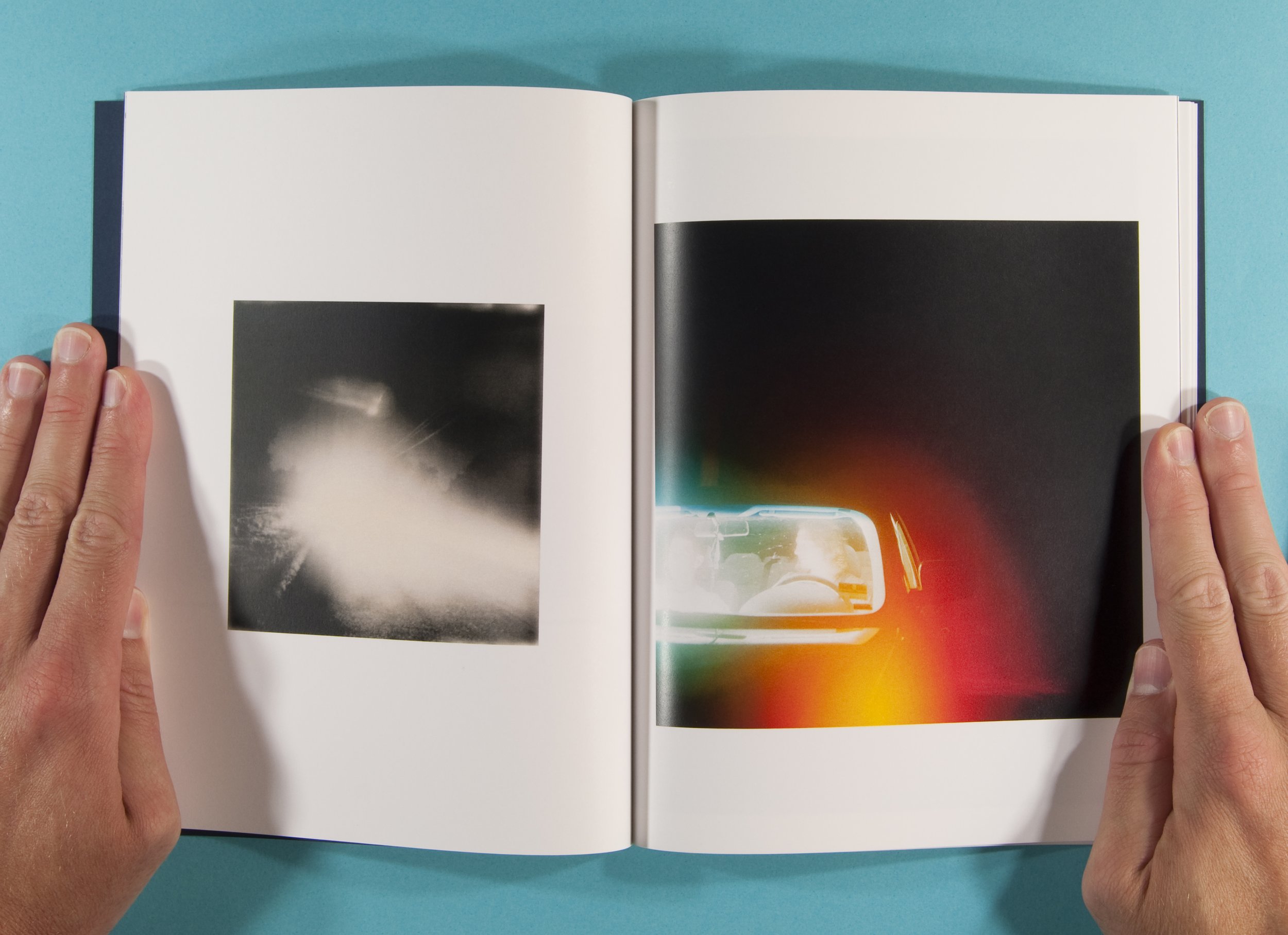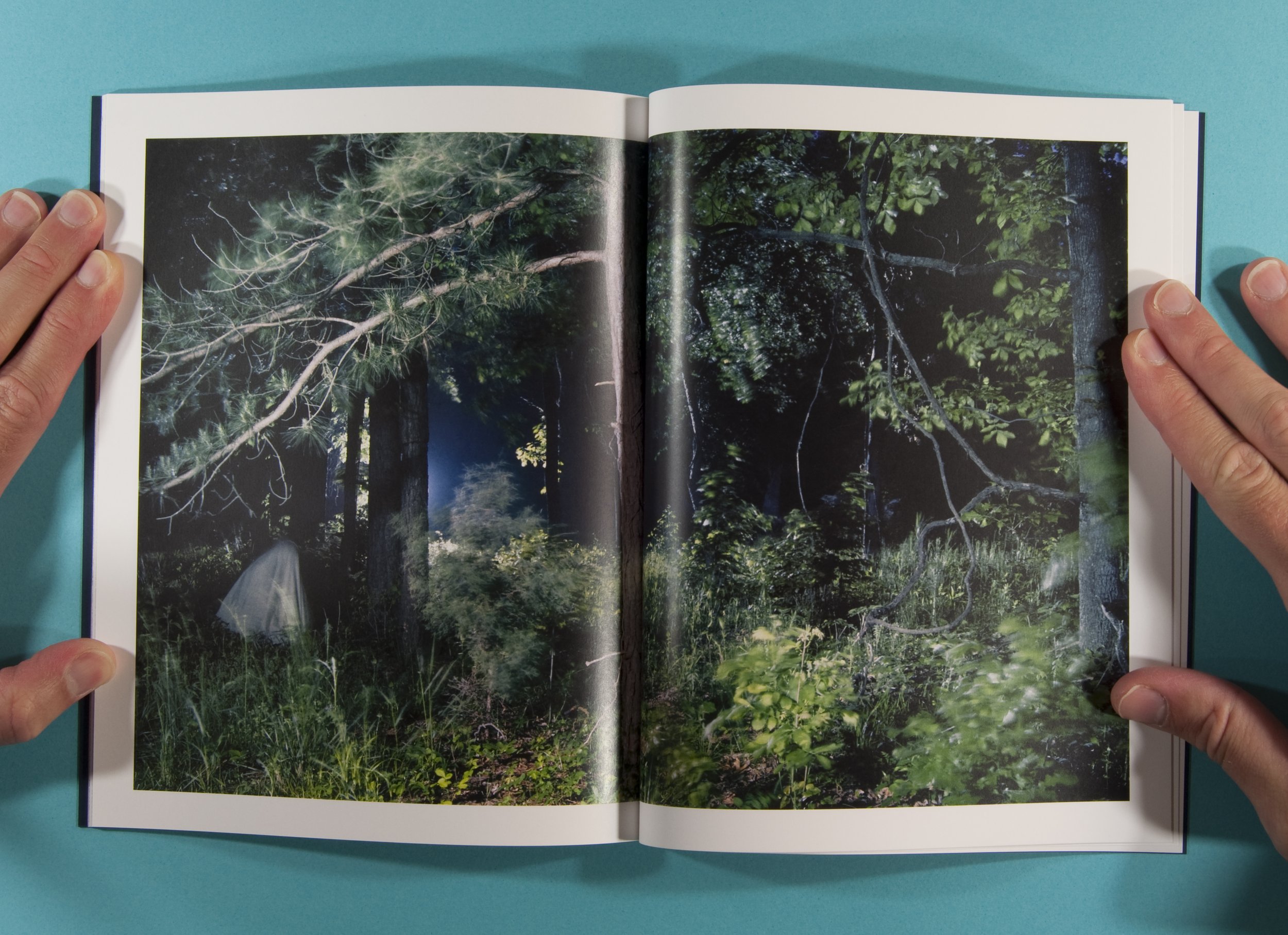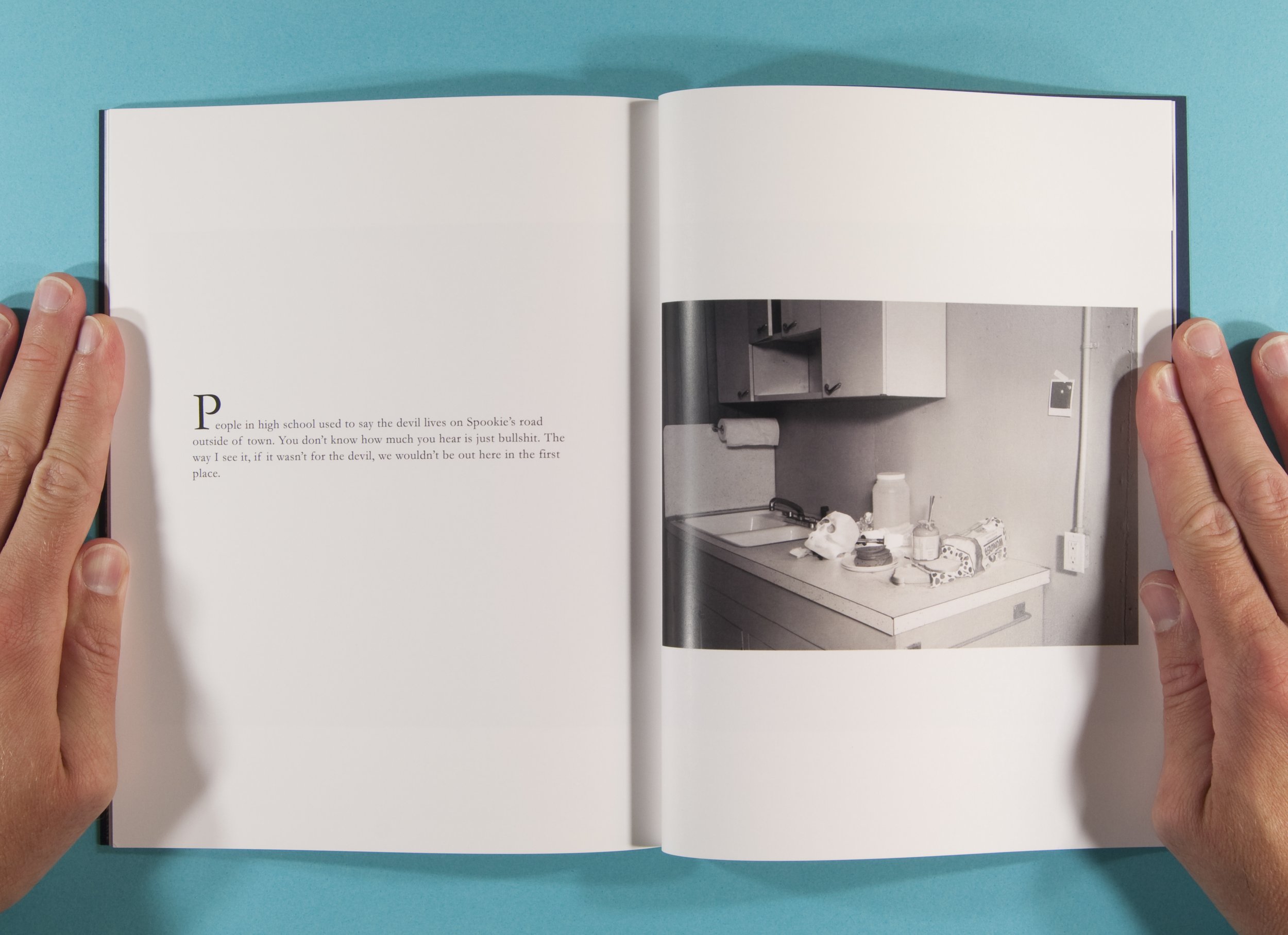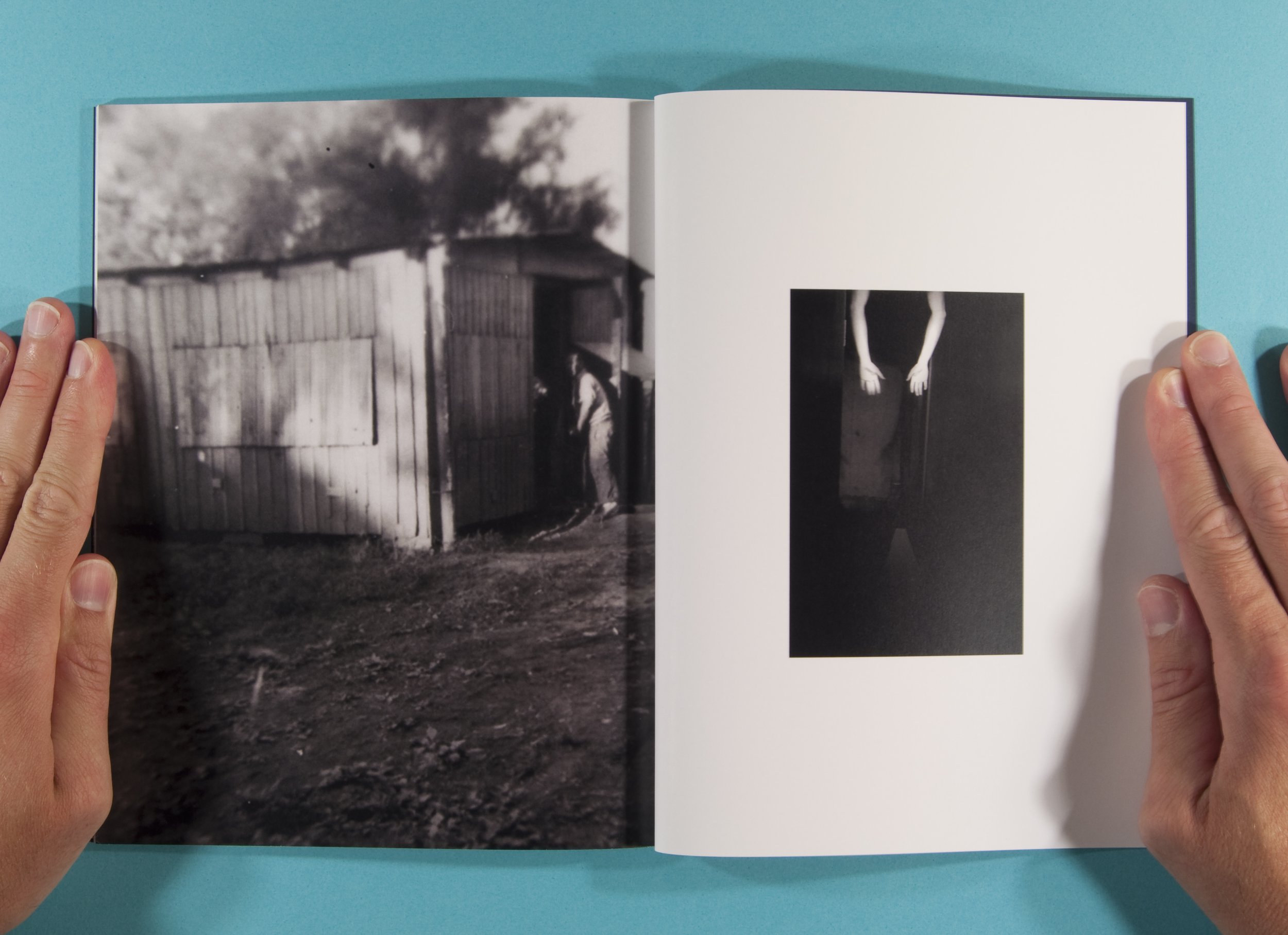Ghost Show May Be in Session
Originally published on On A White Wall, Aug. 2014, ed. Alex Wood.
A glowing light appears, sometimes bobbing up and down or splitting into multiple orbs, in an area of the rural Ozarks ominously known as the Devil’s Promenade. It has done it for generations. Assorted scientists and government agencies have studied them and still know nothing, or at least nothing they will tell us. But, the Spook Lights are less conspiracy theory and more mystery. Laura Shipley and Antone Dolezal’s Spook Light Chronicles approach the subject with just this sensibility.
The series is now in its second volume. The books have simple, unassuming dark blue covers. Gold foil stamping of the title and a silhouetted design, a cluster of orbs on volume one, and a man wearing hat and suit on volume two, bring a sense of elegance and mystery to the investigation.
Vol. 1 – The Road and the Light (2013)
The first page is a series of press excerpts and witness testimony about the spook lights. These kinds of contextual phrasings reappear throughout the book guiding our looking at the photographs.
The photos themselves are a mixture of types of images: archival and historic photos, portraits, landscapes. They shift back and forth from black and white to color, old to contemporary. The assembly speaks to the duration of the lights, setting a context for their long history among a people and culture. The portraits, with quotes presumably by those pictured in the portraits, make the project not so much about finding the lights themselves, but about the culture that surrounds them. The photos express a kind of skeptical belief. Night roads with unknowable lights in the distance are set alongside photographs that are obvious and familiar tricks of the camera and exposure. In one wooded photograph a person lurks under a bed sheet as blowing branches blur through the long exposure. The person waits, clearly unable to deceive with such a rudimentary cliché, but maybe hoping to startle a passerby. Or, maybe the person is waiting under the sheet so as not to spook the light emerging from the wood. Either way there is a kind of hokey and sympathetic expectation in the photo. There is no attempt, or even need, to differentiate what is documentation and what is theater in these photographs. Factual or staged, it is not about discovering the truth of the lights, proving anything one way or another. The photos are about wanting to see, or believing in spite of one’s unbelief. They suggest wonder and a kind of human bond that forms around the unknown.
Volume one ends with a map, old, water stained, and torn along the edges. Drawn by the hand of retired Army Captain Bob Loftin. It delineates the roads, and test sits, but most importantly charts the shifting locations of the lights, a kind of analytic expression of their elusiveness. Here is the chart to the locus of unknowing, tightly wound into the landscape of a place and people, populated by the photographs that precede it.
Vol. 2 – The Phosphorescent Man (2014)
While the first volume centers on the phenomenon as it builds up in a place, the second volume is focused on how this anomaly coalesces in a person – or a series of people to be more accurate. “Spooky” is the name given to a series of individuals who have become a kind of channel for the spook light. If the photos are to be believed, they are either a kind of shaman like figure, a showman milking the gullible, a bartender, an archivist, or maybe all at the same time to one degree or another. Whatever his nature, he is proprietor of the Spook Light Museum.
The center of the book includes a narrative about the passing of the mantle from one Spooky to the next by means of a close encounter of the 3rd kind with the lights – if we can translate the term from space visitations to paranormal apparitions. Surrounding the tale, the factuality of which is pointless to question, are images of Spooky, or at least images that suggest they might be of Spooky. There’s a found photograph of two men dressed in capes and horned masks having cocktails – Halloween party, fraternal order, or a break from an occult rite? In the portrait, I’d Be That Soulless Man, a young man stands alone in a clearing by the woods, exhaling what should clearly be cigarette smoke, but in this context becomes the ectoplasm of a nineteenth-century séance. As it says in one excerpt from the book, “if the light didn’t shine, Spooky would.” And within this show are the faces of people earnest and true.
It’s often hard to know for sure who is in the pictures and their precise connection, if any, to the floating lights and the man who guides folks to them. But, in the end it’s not the point, just like Spooky is a trans-generational conglomeration of many individuals, the figures in the book come together to assume this larger whole and bring us closer to the mythos and culture of the Phosphorescent Man and his realm in the Devil’s Promenade.
In the end, these are not books made to tell us something. They do that, surely, but more importantly than that, they bring us into a world, a world of not knowing.
While one can use the index of credits in the back of the books to source the origins of the image as either appropriation or the work of either Shipley or Dolezal, that hardly seems necessary. The photographs come together so cleanly in the books that their very differences are what make the volumes hold together as a kind of archive of research into the idea of the spook lights and the expectation that surrounds them. The Spook Light Chronicles, Vol. 1 & 2, house images that can be just as haunting as the things that they attempt to present. One is left with the faith that any additional volumes will further deepen the mystery.
